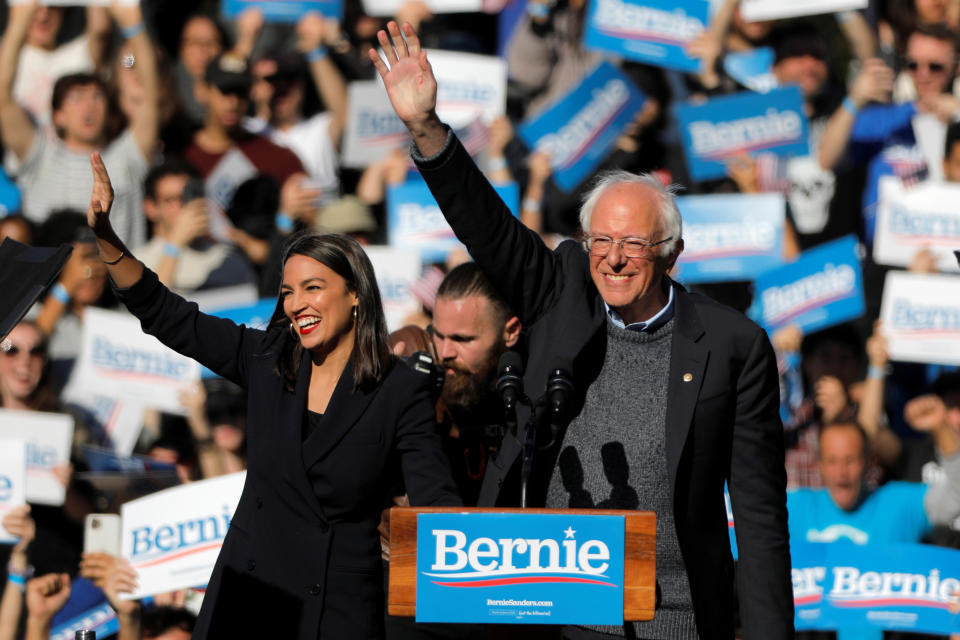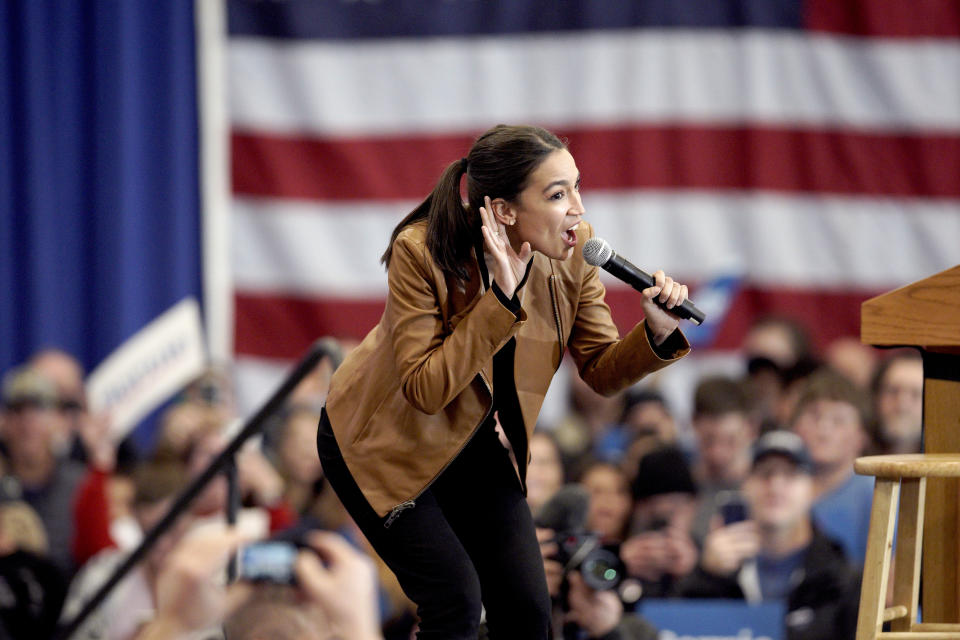Bernie Sanders's hidden strength: AOC, Cardi B — and young Latino Dems
- Oops!Something went wrong.Please try again later.
- Oops!Something went wrong.Please try again later.
- Oops!Something went wrong.Please try again later.
- Oops!Something went wrong.Please try again later.
Welcome to 2020 Vision, the Yahoo News column covering the presidential race with one key takeaway every weekday and a wrap-up each weekend. Reminder: There are 56 days until the Iowa caucuses and 330 days until the 2020 election.
Call him “Tío Bernie.”
Bernie Sanders is a 78-year-old Jewish senator from an overwhelmingly white state. But if he wins the Democratic nomination, he could have young Latino voters to thank.
For much of 2019, pundits have written Sanders off. While acknowledging the steadfastness of his support — his national polling average almost never dips below 15 percent — they have observed that he’s failed to grow his base over the campaign. (That same national polling average hasn’t cracked 20 percent since April, either). Their assumption has been that Sanders is doomed to remain a factional candidate. He may have a lot of devotees, the thinking goes, but he won’t have enough delegates to actually secure the nomination.
In recent weeks, however, that conclusion has come to seem less certain. On the defensive over Medicare for All, Elizabeth Warren has slid in the polls, shedding supporters on the left (who now doubt her commitment to single-payer health care) and the center (who now fear she’s too committed). Pete Buttigieg appears to be the major beneficiary, more than doubling his national polling average since October and vaulting to the lead in Iowa and perhaps even New Hampshire by picking up white, college-educated Democrats who previously backed Warren. Joe Biden, meanwhile, has remained in first place nationally, blocking Buttigieg in the moderate lane. With less competition on the left, Sanders has moved into second place in Iowa, New Hampshire and the national surveys.

Which means that he may actually have a path to the nomination.
The Sanders campaign has long bet on a factional strategy: Secure your base. Hope for a divided field. Prepare for a drawn-out primary. Fight for every delegate all the way to the Democratic National Convention in Milwaukee. Warren’s decline, coupled with the growing Biden-Buttigieg split among moderates, has suddenly made this plan more plausible.
And that’s why the Latino vote is so important. For years everyone has known that Sanders runs strongest among younger voters. In the 2016 Democratic primary, he beat Hillary Clinton 71 percent to 28 percent among voters under 30; the latest Quinnipiac poll shows him leading by nearly 10 percentage points among voters ages 18 to 34.

Less known is the fact that Sanders is also starting to dominate among Latinos (who tend to be young, with an average age of 28). According to 2016 CNN exit poll data from 27 primary states, Sanders and Clinton largely divided the Latino vote last time around, with Sanders winning roughly 70 percent of Latinos under 30 and Clinton garnering the older Latino vote. This time, however, Sanders’s Latino appeal appears to be cross-generational. In a recent Fox News poll of Nevada, Latinos there preferred Sanders over Biden by seven percentage points. Sanders also led Biden among Latinos by nine points in a recent Latino Decisions poll of California, doubled the former vice president’s Latino vote in the University of Texas at Tyler poll, led narrowly with Latinos in a New York Times/Siena poll of Florida and ran even with Biden in Arizona, according to the OH Predictive Insights survey.
This is no accident: Seeing little competition — the only Latino contender, former Housing and Urban Development Secretary Julián Castro, is barely registering in the polls — the Sanders campaign has worked to cultivate support in the community. He has held “Unidos con Bernie” events throughout the early voting states. Nearly a quarter of Sanders’s 400 campaign staffers are Latino, including Analilia Mejia, his national political director. According to CNN, the campaign opened its first Nevada field office in East Las Vegas, home to the highest concentration of Latinos in the state. The first dollars Sanders spent in California were used to open an office in East L.A. And the first thing the campaign did in Iowa was communicate with voters in a bilingual format. Partially as a result, Sanders has collected more money from Latino voters than any other candidate in the Democratic field, raising three times as much from the group as Barack Obama did in 2008.
Oh, and Sanders also has the endorsements of the most prominent and influential young Latina politician (Alexandria Ocasio-Cortez) and entertainer (Cardi B) in the country.
“He’s my tío Bernie Sanders,” AOC said when she threw her support behind the senator in October, adding in a later interview that he appeals to Latinos in particular because “he’s the only candidate that very solidly rests all of his policies on a principle of universality.”

The investment might pay off. In 2016, Latinos represented about one in 10 Democratic primary voters. But this year they’re concentrated in states that will vote at pivotal moments in the primary process: Nevada (Feb. 22), California (March 3), Texas (March 3), Florida (March 17) and Arizona (March 17). Assuming Sanders sustains or even increases his Latino support — and assuming the top tier remains fairly evenly divided and Warren remains relatively weak — he might carve out a durable niche while racking up the numbers he needs to remain competitive.
Clear 15 percent (roughly) in Iowa, and Sanders should get a few delegates. The same goes for New Hampshire, Vermont’s neighbor. Then it’s on to the Latino-heavy caucus state of Nevada, where Sanders’s money and organizing advantage (he’s raised more than any other Democrat nationally and already has the biggest Silver State team) could propel him to victory. Strong Super Tuesday showings two weeks later in Texas and California (where the latest University of California at Berkeley poll shows him in the lead) could force Warren from the race, especially if she’s already fallen short in the four early states. Then Sanders would have the liberal lane to himself while Biden and Buttigieg battle over the middle — a dynamic that would all but ensure he continues to run through the tape in Milwaukee.
What happens then is anyone’s guess. Sanders is still not a favorite for the nomination; he lacks Biden’s establishment support (an important asset in a long delegate battle) and Buttigieg’s crossover appeal. But if Latino voters turn out for him, Tío Bernie could put up a very real fight.
_____
Download the Yahoo News app to customize your experience.
Read more from Yahoo News:





